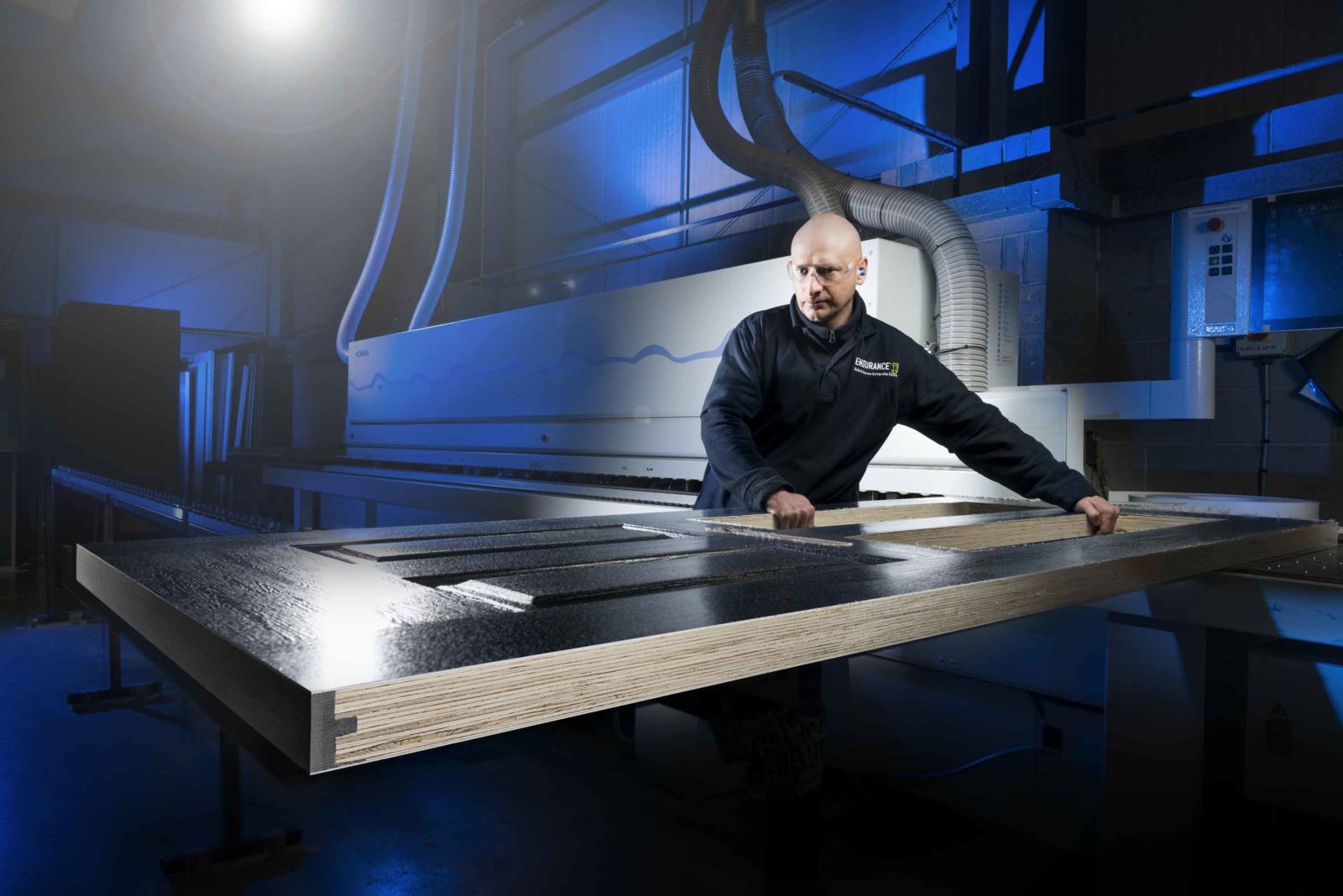The great slab debate


Stephen Nadin, managing director of Endurance Doors, discusses what it takes to develop a next generation product, and says door technology is still evolving.
The composite door market is growing strongly, fuelled by pre-Covid-19 demand from consumers for a better performing and looking front door.
Yet, the recent surge in orders post-lockdown will also likely see the composite door market breaking the one million barrier, in terms of annual installations in 2021.
Over the last 20 years the composite door market has experienced considerable development, growth and relative market maturity, yet we can expect considerable growth for many years to come, based on our forecasts. The market dynamics are relatively easy to disassemble, between those brands that advocate a GRP-based door and those that are firm advocates of a solid timber core, as we are at Endurance Doors.
GRP composite doors feature a painted, stained or an embossed finish, that in reality don’t quite match the PVCU frames into which they are fitted. Given the abundance of foam that’s within the door structure, these doors also fall foul of the green agenda, which is becoming ever more important if we are to help save the planet.
While the construction of GRP doors is relatively consistent across all the brands, the same cannot be said for the solid timber core composites. Some use stile and rail constructed fire door blanks, something that we looked at and subsequently dismissed over 10 years ago. Moreover, our tests have shown that some of these slabs have been value engineered with different types of timber, such as lightweight balsa wood.
Our door slab is a product of continuous evolution, and the current Endurance Door benefits from a laminated veneer lumber slab that’s fully proven elsewhere in the construction sector for roof and floor beams, panel structures, joists, trusses etc.
This timber construction is CE marked and certified by VTT Technical Research Centre of Finland, no 184/03, so they are fully traceable.
The 17 individual laminations in the Endurance Door slab provide greater structural integrity, and they have proven over time to be consistently dimensionally stable. We’ve even tested our doors and others with a sledgehammer, wielded by Hunter from 1980s cult TV show Gladiators, as presented on our YouTube channel.
For some time, we have made our Moisture Barrier System a key feature for product performance, and it’s a section of Timbplas, which is a strip of cellular PVC bonded to base of each door slab, helping to eliminate any risk of water ingress from the glazing rebate in our PVCU door frames. Similarly, we have introduced a wet glazing process for the glazing apertures, so that water ingress within an Endurance Door simply doesn’t happen through clever design and better manufacturing process.
The performance of all door slabs is also impacted by the skin used. We adopt the CoolSkin sheets as they benefit from a PVCU foil that’s impregnated with proven heat reflective properties in the skin and within the premium white substrate. It’s also a sheet that’s a perfect match to the PVCU frames that we use. We’ve seen the results of alternative door brands that are manufactured with an ABS sheet and they can and do crack, split and delaminate within as little as nine months.
Given the investment made by us as a caring and diligent business, product failures have all but been eliminated. For this reason, we have now made our pledge with a 3mm bowing guarantee, so that our customers are confident for the long-term.
Elsewhere, we hear of many instances of composite doors bowing and, subsequently, the locking mechanisms and cylinders start to fail.
The debate about door slabs will no doubt carry on, but for us and our installer partners, there’s more confidence than ever before that we have finally developed a solid and secure composite door offering that’s the pinnacle of product innovation in the sector.